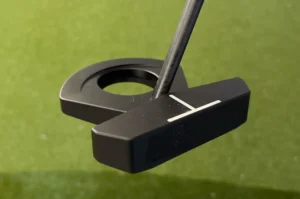Every golfer dreams of reaching the elite status of a “scratch golfer” – someone with a handicap of zero who can consistently shoot par or better. But less than 1% of golfers actually attain this level of mastery.
So what does it take to join the scratch golfer club? This article will demystify the path to shooting in the 70s and analyze the skills, training, and strategy needed to achieve this golfing nirvana. Read on to start sharpening your short game and carving strokes off your handicap.
What is a scratch golfer
First, let’s review the basics. A golf handicap is a numerical measure of a player’s ability calculated against the course’s difficulty. It aims to even the playing field by allowing players of different skill levels to compete fairly against each other.
The average handicap for male amateur golfers is around 14-16. For females, it’s about 28-30. Beginners often start with a handicap in the 20s or 30s. Meanwhile, top professional golfers have handicaps of +4 or lower.
A scratch golfer is the holy grail – someone with a handicap of exactly zero. This means they can play to an average score of par or better regularly, without any extra strokes given. Accomplished amateurs strive for single-digit handicaps of 0 to 9.
So reaching scratch status indicates an elite mastery of the game. But it is achievable with proper skills training and strategy.
Benchmark Your Current Scores
The first step is knowing your starting point to measure improvement. Maintain a detailed golf journal and track all your scores diligently. Note your average total strokes as well as performance on par 3s, 4s, and 5s. Also record putts, penalties, fairways hit, and other key stats.
Apps like Golfshot, SwingU, and others can automate scorecard and stat tracking. Review your scores to find weak areas – do you struggle most with long drives, approach shots, sand saves, or putting? Establish your baseline so you can quantify progress.
Hone Your Skills Through Focused Practice
Consistent skills development is crucial to shaving strokes and getting your handicap into single digits or lower. Set aside 4-6 hours each week for quality driving range sessions, not just playing rounds. Professional instruction can help, but dedicated practice is a must.
Refine your long and short iron play. Groove consistent ball-striking and work continuously on your driving accuracy. FlightScope and TrackMan sensors precisely track swing speed, launch angle, and shot shape.
Master wedge shots. Hone chip shots from 50 yards in and flawless sand escapes. Wedge mastery will save you countless strokes inside 100 yards.
Become a putt whisperer. Putting may comprise 40% of your strokes. Improve reading greens and “feel” through drills like the ladder, gate, and tee box challenges. Master green speeds and break.
With focused skills practice, your driving distance, proximity to the hole, scrambling, and putts per round will all improve dramatically.
Implement Smarter Course Management
Physical skills are only one part of the equation. Mastering course management and mental focus is equally important to become a scratch golfer.
Pick smart clubs. Distance yardage tables can improve club selection and avoid errant shots. But you need to account for hazards, pin placement, and your own strengths/weaknesses too.
Plot strategy hole by hole. Identify the highest percentage play on each hole before teeing off. Position drives to avoid hazards and set up better approach angles.
Recover like a pro. Even scratch golfers miss greens and land in bunkers. But they get up-and-down far more often, turning bogeys into pars through excellent scrambling skills.
Stay mentally focused. Don’t dwell on bad holes or strokes. Maintain concentration on the current shot without getting distracted. Have pre-shot routines to get in the zone.
Making the right decisions consistently and blocking out distractions will lead to dramatic score drops once the skills are ingrained.
Monitor Progress Using Stats and Scorecards
To continually improve, embrace stats and analytics to quantify progress and spot problem areas.
Log rounds in an app. Apps like Golfshot let you review past round performances hole-by-hole and track fairways, greens, and putts. Identify patterns in your weak holes.
Generate performance reports. Apps can chart driving accuracy, greens in regulation, and other key metrics over time. Review if skills practice is moving the needle.
Get a playing lesson. Have a pro play alongside you and assess your course strategy in real time during a round. They can provide tips tailored to actual scenarios.
Consider a skills assessment. High-tech swing evaluations like TrackMan combine radar ball tracking data, video, and pro analysis to breakdown every aspect of your game from drives to putts. The insights can be invaluable for identifying precise improvement opportunities against scratch golfer benchmarks.
Through numbers and metrics, you gain visibility into parts of your game needing work. Then practice can be fine-tuned to address weaknesses.
Take Lessons From a PGA Pro
While ardent practice is vital, professional instruction can accelerate learning proper swing mechanics, shot strategy, and the nuances of the game.
Master proper form. Even experienced golfers can pick up detrimental habits. A pro helps ingrain correct form and body positioning tailored to your unique swing.
Correct problem areas. Diagnose why you consistently slice drives or flub chip shots. An instructor identifies weaknesses and gets to the root cause.
Shortcut learning. You can figure things out on your own through trial and error. But personalized instruction fast tracks mastering advanced shot skills.
Gain a competitive edge. Pros have deep expertise from experience and coaching peers. Tap into their knowledge to get an extra advantage.
While not mandatory, lessons with a head pro or qualified instructor will hasten hitting par consistently without needing a handicap.
Set Goals and Milestones
Lastly, clearly define your objectives and timeline for achieving scratch golfer status. Set measurable process goals for skills improvement and scoring benchmarks.
Skills goals. Set targets like driving distance of 250 yards or 30 putts per round. Hit the driving range to move the bar.
Scoring goals. Shoot for dropping 2 strokes per round each month. Or aim for breaking 80, then 75. Check progress vs. milestones.
Play varied courses. Scoring well on your home course is one thing. Test skills on unfamiliar layouts and conditions.
Enter tournaments. Signup for club events or amateur tournaments with skill-based pairings. Gauge abilities against other aspiring scratch golfers.
Stay motivated. Post goals as reminders. Watch the progress of scratch journey videos. Stay the course even during plateaus.
With concrete steps for skills, strategy, metrics, and mindset, the path to elite scratch status is clearer. It requires diligence and determination, but is absolutely attainable. Golfers have shaved off 10 strokes or more to enter the rarified air of scratch handicaps through dedicated training.
Final Verdict: Making Par Should Be Your New Normal
Shooting par used to seem impossible, but is now in your sights with focused practice. Arm yourself with the right training plan and get ready to astonish your regular foursome by emerging as a scratch golfer. Savor their awe when you casually sink a birdie putt or nail a greenside flop shot that used to flummox you.
Your new normal is making par on every hole thanks to honing your skills, strategy, and mental game. The journey requires diligence – but you now have a blueprint for achieving once-unimaginable scores in the 70s. Let the scratch status obsession begin. Your handicap will plunge as your mastery soars. Just remember to periodically buy your newfound admirers a beer in the clubhouse.








